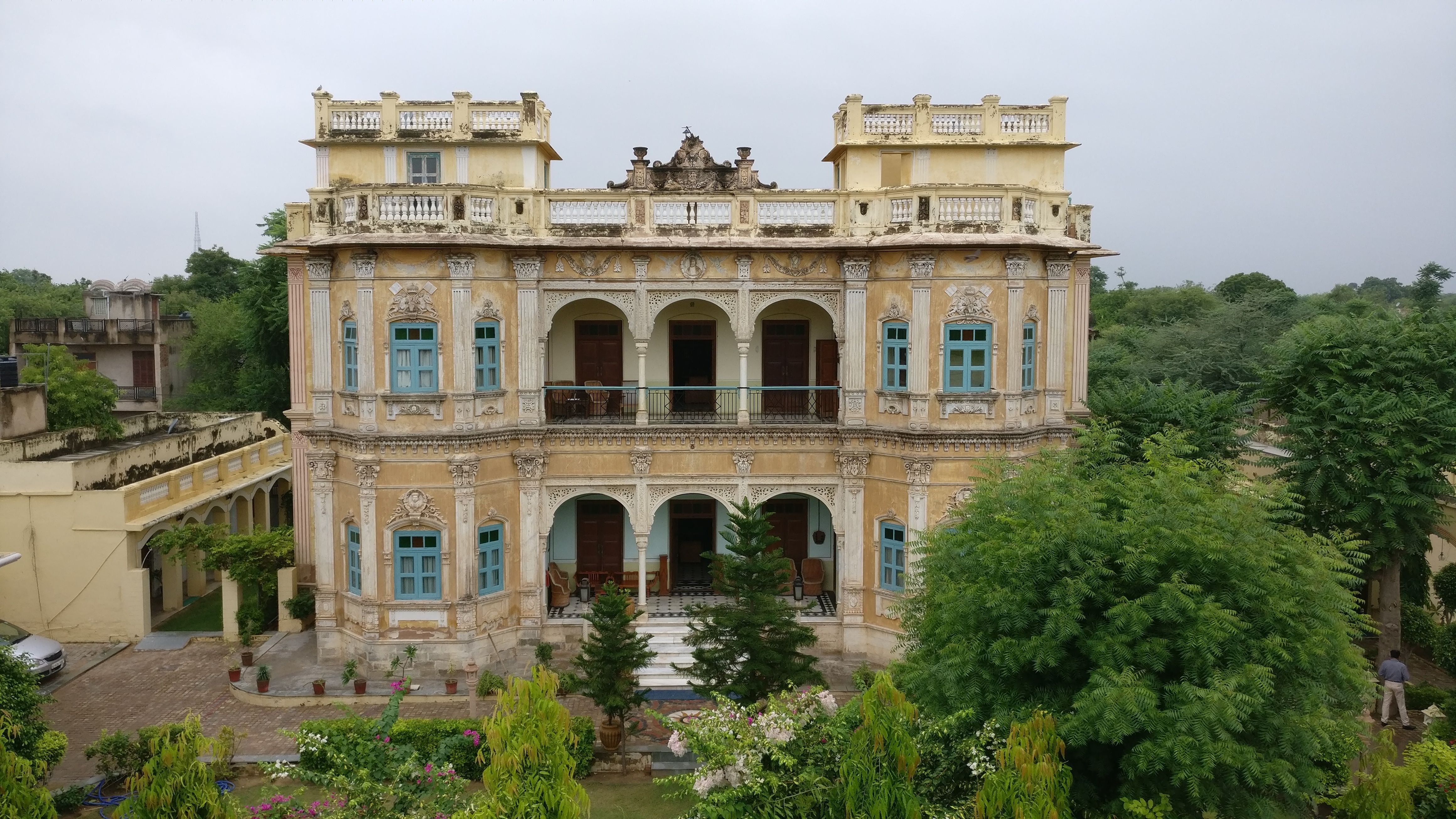

Likewise, there are fewer examples of the Colonial Revival style with a second story overhang inspired by the form of Post Medieval English buildings. Less common are examples of the Dutch Colonial Revival which are distinguished by a gambrel roof, and sometimes a shallow pent roof over the first floor. In the 1940s and 1950s a more simplified version of the Colonial Revival style became popular for homes, usually featuring a two story building, a side-gabled or hipped roof, classically inspired door surrounds and windows, shutters and dormers. These colonial era details could be combined in a great variety of ways, creating many subtypes within this style. Generally, the Colonial Revival style took certain design elements - front façade symmetry, front entrance fanlights and sidelights, pedimented doorways, porches and dormers - and applied them to larger scale buildings. Although, in the early years of the 20th century (1915-1935) there was a real interest in studying and duplicating Georgian period architecture. Like most revival efforts, the Colonial Revival style did not generally produce true copies of earlier styles.

This trend was further promoted by the Columbian Exposition of 1893, held in Chicago. This enthusiasm to explore the architecture of America's founding period was generated in part by the Philadelphia Centennial of 1876 celebrating the country's 100th birthday. Less commonly, the Post-Medieval English and Dutch Colonial house forms were an influence on the Colonial Revival style. Basically, the Colonial Revival style was an effort to look back to the Federal and Georgian architecture of America's founding period for design inspiration. It can be seen in a seemingly endless variety of forms throughout the state and the country and still continues to influence residential architecture today. One of the most frequently produced and enduring popular styles in America is the Colonial Revival style. John Milnes Baker, AIA.Colonial Revival Style 1880 - 1960 History.American Shelter: An Illustrated Encyclopedia of the American Home, 1998 Architectural Style Guide, Historic New England,.English Colonial Domestic Architecture of New England by Christine G.Architecture of New England and the Southern Colonies by Valerie Ann Polino,.Once you get a taste of Colonial American house styles, you'll know some of what has made America strong. Lastly, Plimoth Plantation is the Disney-equivalent of 17th century New England living, as the visitor can experience an entire village of the primitive huts that started it all. The town of Salem, Massachusetts is a museum itself, with the House of Seven Gables (1668) and the Jonathan Corwin House (1642), also known as "the Witch House," being two popular tourist attractions. A Boston home built in 1680 and once owned by American patriot Paul Revere is a popular post-medieval style to view. The Jethro Coffin House, built in 1686, is the oldest house on Nantucket. The home of author Louisa May Alcott, Orchard House in Concord, Massachusetts, is a good example of farmhouses built between 16. The Hoxie House in Sandwich, Massachusetts was built in 1675 and is said to be the oldest house still standing on Cape Cod. Many of New England's finest colonial homes are open to the public. This was the extent of decorative design.
Colonial architect definition windows#
The most decorative were the post-medieval styles, where the second story slightly protruded over the lower floor and the small casement windows would have diamond-shaped panes. New England architecture was inspired by the beliefs of the inhabitants, and the Puritans tolerated little exterior ornamentation.

Some homes added the luxury of saltbox-shaped lean-to additions, used to keep wood and supplies dry. A large, center fireplace and chimney would heat upstairs and downstairs. Early homes were one story, but as more family arrived from Britain these "starter homes" became two-stories, often with steep roofs, narrow eaves, and side gables. Northern colonial homes were wood framed construction, usually the plentiful white pine, with clapboard or shingle siding. Remember that Vermont and Maine were not part of the 13 original colonies, although much of the architecture is similar, modified by French influences from the north. Early New England colonial houses were usually located mostly along the shores of Massachusetts, Connecticut, New Hampshire, and Rhode Island.


 0 kommentar(er)
0 kommentar(er)
